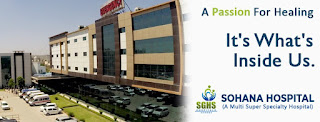What to do in Case of Emergencies; be a Responsible First Responder (Part2)
Case 3 : Choking & Asphyxiation
Asphyxiation happens when the body is
deprived of oxygen, which can result in unconsciousness or death due to
suffocation.
Step 1 : Notice the first signs of choking.
Gagging, wheezing, turning blue in the face, waving of the arms and looking
panicked are all signs of choking.
Step 2 : Administer the Heimlich Maneuver.
- Stand behind the person and make them
lean forward.
- Put your arms around their waist and clench your fist and place it
between their (navel) and rib cage.
- Grab your fist with your other hand.
- Pull sharply first backward and upward under the person’s rib cage
in quick thrusts.
- Repeat until the object is
out of the trachea.
Case 4 : Burns
A burn wound occurs when the skin and skin tissue
comes in contact with heat or radioactive electricity or comes in contact
with skin corroding chemicals.
There are degrees to burn wounds and they are as
follows -
- First-degree burns - This kind of burn
only harms the skin to the extent of its outer layer causing redness,
swelling and other minor blisters.
- Second-degree burn- This kind
of burn is twice in severity than the first degree burn and causes
blistering, swelling and redness. If it is on a major joint or affects the
skin more than 2-3 inches wide, it is considered a major burn.
3. Third-degree burn-
The most severe form of burn wound. This occurs when the heat causes the skin
to corrode deep within its layers. It shows signs of blackish blue pigment,
blisters and boils.
Burn wounds can be treated using the following
steps -
Step 1 : Gently clean the area with cold water (Do
not use ice)
Step 2 : If the burn is not severe, cover the wound
with gauze or clean cloth and clean it with anti-inflammatory ointments like
aloe vera or hydrocortisone and consume a pain killer for the same.
Step 3 : If any blisters form, make sure to not
scratch the affected areas until it heals completely.
Finding the bestcritical care specialist around you is imperative to a faster response time
for the injured person. Sohana Hospital, Mohali has a world class trauma center
with critical care ambulance service and life-saving treatment options
available such as dialysis machine, oxygen support, ventilator, feed tubes,
trauma management for burn injuries,
cardiac arrest, head traumas, blunt force traumas, MVA’s, strokes and life
threatening allergies.




Comments
Post a Comment